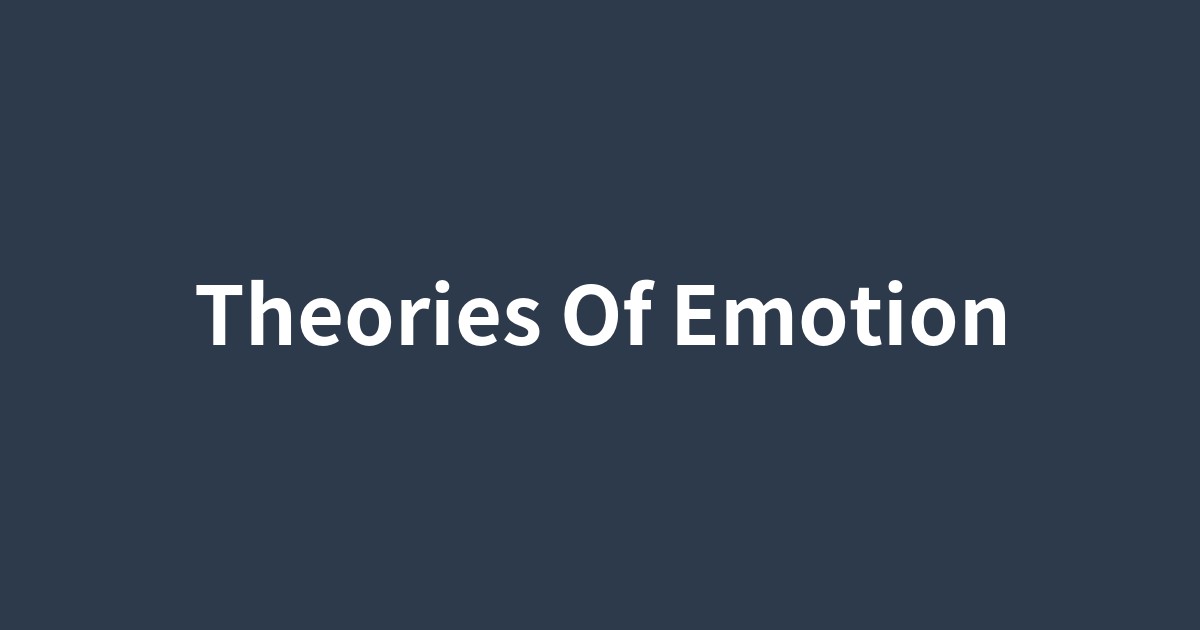このページは、歴史や文化の物語を楽しみながら、その文脈の中で重要な英単語を自然に学ぶための学習コンテンツです。各セクションの下にあるボタンで、いつでも日本語と英語を切り替えることができます。背景知識を日本語で学んだ後、英語の本文を読むことで、より深い理解と語彙力の向上を目指します。

「悲しいから泣く」のか、「泣くから悲しい」のか。身体的なreaction(反応)と、感情のexperience(経験)の順序をめぐる、心理学の古典的な論争。
この記事で抑えるべきポイント
- ✓ジェームズ=ランゲ説の核心は、「泣くから悲しい」のように、身体的な反応が感情の主観的な経験に先行するという画期的な視点です。
- ✓キャノン=バード説は、ジェームズ=ランゲ説への反論として登場し、感情の経験と身体的な反応は脳(特に視床)からの指令でほぼ同時に発生すると主張しました。
- ✓二つの説の最大の対立点は、感情のプロセスにおける「身体反応」と「主観的経験」の因果関係、つまりどちらが先に起こるかという点にあります。
- ✓これらの古典的な論争は、どちらか一方の説が完全に正しいという結論には至っていませんが、後の認知心理学の発展を促し、現代の感情研究の礎を築きました。
感情とは何か ― ジェームズ=ランゲ説とキャノン=バード説
「怖いから心臓がドキドキする」のでしょうか、それとも「心臓がドキドキするから怖いと感じる」のでしょうか。この日常的な問いは、心理学における100年以上にわたる大きな論争の核心を突いています。この記事では、感情の起源をめぐる二大巨頭、ジェームズ=ランゲ説とキャノン=バード説という二つの「理論(theory)」を紐解き、私たちの「心」がどのように生まれるのかを探求します。
What is Emotion? — The James-Lange and Cannon-Bard Theories
Do our hearts pound because we are scared, or do we feel scared because our hearts are pounding? This everyday question strikes at the core of a major debate in psychology that has lasted for over a century. In this article, we will explore this question by delving into two major theories on the origin of emotion: the James-Lange theory and the Cannon-Bard theory, to investigate how our "minds" come to be.
常識への挑戦:「泣くから悲しい」と提唱したジェームズ=ランゲ説
19世紀末、心理学者のウィリアム・ジェームズと生理学者のカール・ランゲがそれぞれ独立して提唱したこの説は、「感情が身体反応を引き起こす」という当時の常識を根底から覆しました。彼らの主張はシンプルかつ画期的です。例えば、森で熊に遭遇するという外部からの「刺激(stimulus)」があったとします。常識では「熊が怖いから、心臓が速くなり、逃げ出す」と考えます。しかしジェームズ=ランゲ説では、まず心拍数の増加や筋肉の緊張といった身体的な「反応(reaction)」が起こり、その変化を脳が捉える「知覚(perception)」こそが、「恐怖」という主観的な感情の「経験(experience)」なのだと説明したのです。「悲しいから泣く」のではなく、「泣くという身体反応が起こるから、悲しいと感じる」というわけです。
Challenging Common Sense: The James-Lange Theory's "We Feel Sorry Because We Cry"
Proposed independently by psychologist William James and physiologist Carl Lange in the late 19th century, this theory fundamentally overturned the common-sense notion that emotions cause bodily responses. Their argument is simple yet revolutionary. For instance, imagine an external stimulus, such as encountering a bear in the woods. Common sense suggests that we think, "I'm scared of the bear, so my heart races, and I run away." However, the James-Lange theory explains that first, a physical reaction occurs—such as an increased heart rate or muscle tension—and our perception of these changes is what constitutes the subjective experience of the emotion of "fear." It's not that we cry because we are sad, but rather, we feel sad because the bodily reaction of crying occurs.
脳からの同時指令:キャノン=バード説による反論
20世紀初頭、生理学者のウォルター・キャノンとその弟子フィリップ・バードは、ジェームズ=ランゲ説のいくつかの矛盾点を鋭く指摘しました。例えば、恐怖、怒り、興奮といった全く異なる感情でも、心拍数の増加や発汗といった、よく似た「生理的な(physiological)」反応が見られるではないか、と。もし身体反応が感情を決定づけるなら、なぜ私たちはこれらの感情を明確に区別できるのでしょうか。この疑問から、キャノン=バード説は生まれました。彼らは、感情的な出来事に遭遇すると、脳の司令塔である視床(thalamus)が興奮し、そこから「感情の主観的な経験」を司る大脳皮質と、「身体的な反応」を司る交感神経系の両方へ、ほぼ同時に指令が送られると主張しました。つまり、「怖い」という感情と「心臓のドキドキ」は、どちらが原因でどちらが結果という関係ではなく、脳からの指令によって同時に発生する現象だと考えたのです。
Simultaneous Signals from the Brain: The Cannon-Bard Theory's Rebuttal
In the early 20th century, physiologist Walter Cannon and his student Philip Bard sharply pointed out several inconsistencies in the James-Lange theory. For example, they argued that very different emotions like fear, anger, and excitement can produce similar physiological responses, such as an increased heart rate and sweating. If bodily reactions determine emotions, why can we clearly distinguish between these feelings? The Cannon-Bard theory emerged from this question. They proposed that when we encounter an emotional event, the thalamus in the brain is stimulated, which then sends signals almost simultaneously to both the cerebral cortex, which governs the subjective experience of emotion, and the sympathetic nervous system, which controls bodily reactions. In other words, the feeling of "fear" and a "pounding heart" are not in a cause-and-effect relationship but are phenomena that occur concurrently due to signals from the brain.
論争のゆくえ:身体と認知、そして現代心理学へ
「身体が先か、心が先か」。この心理学上の大きな「論争(controversy)」は、どちらの説も決定的な証拠を示すことができず、長きにわたり続きました。しかし、この対立は決して無駄ではありませんでした。むしろ、この論争があったからこそ、研究者たちは感情のメカニズムをより多角的に探るようになり、後の心理学の発展に大きく貢献したのです。特に大きな影響を受けたのが、1960年代に登場したシャクターとシンガーの「感情の二要因理論」です。この理論は、身体的な反応だけでは感情は決まらず、その状況を私たちがどう解釈するかという「認知の(cognitive)」なラベル付けが加わって初めて、特定の感情が生まれるとしました。これは、ジェームズ=ランゲ説の「身体」と、キャノン=バード説が示唆した「脳(思考)」の両方の重要性を統合しようとする、より洗練されたモデルでした。
The Trajectory of the Debate: Body, Cognition, and Modern Psychology
"Body first or mind first?" This major controversy in psychology continued for a long time, with neither theory able to provide conclusive evidence. However, this conflict was far from futile. In fact, it was because of this debate that researchers began to explore the mechanisms of emotion from multiple perspectives, contributing significantly to the later development of psychology. A particularly influential outcome was the "Two-Factor Theory of Emotion" by Schachter and Singer in the 1960s. This theory posited that emotion is not determined by bodily arousal alone; a specific emotion arises only after we apply a cognitive label to interpret the situation. This was a more sophisticated model that attempted to integrate the importance of both the "body" from the James-Lange theory and the "brain (thought)" implied by the Cannon-Bard theory.